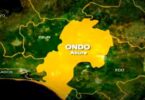Cloud seeding, the process of artificially inducing rain by dispersing substances into the air, is used in various countries around the world. These countries have employed it either for agricultural purposes, to alleviate drought, or to enhance precipitation in certain regions.
Cloud seeding for rainfall requires the presence of clouds; without them, it is not possible.
While not every country has a comprehensive list of cloud seeding programs, some nations known for utilizing this technology include:
1. United States
In the United States, cloud seeding is utilized in various regions, particularly in states prone to drought or water scarcity, such as California, Texas, and Colorado.
The practice is often employed to augment precipitation and manage water resources, especially in arid and semi-arid areas.
Government agencies, water districts, and private companies collaborate on cloud seeding projects to enhance rainfall for agricultural, ecological, and water supply purposes.
2. China
China is one of the most prolific users of cloud seeding technology globally.
The country has been conducting large-scale cloud seeding operations for decades, primarily to alleviate drought and increase rainfall in regions facing water scarcity.
China’s cloud seeding efforts are extensive, with government agencies frequently deploying aircraft, rockets, and ground-based generators to disperse cloud seeding agents such as silver iodide into the atmosphere.
These operations often target areas experiencing water shortages, particularly in northern and western regions.
3. Russia
Russia also employs cloud seeding techniques, primarily for agricultural purposes and to manage water resources in arid regions.
While not as extensively documented as in some other countries, Russia has conducted cloud seeding experiments and programs in various parts of the country.
These efforts aim to increase precipitation and alleviate drought conditions, particularly in agricultural areas where water availability is crucial for crop production.
Additionally, cloud seeding may be used in Russia for other purposes, such as snow enhancement in winter sports regions.
4. United Arab Emirates
Since 1990, the UAE has led ambitious cloud seeding programs, primarily in its desert regions. Facing water scarcity due to its arid climate, the UAE heavily invests in cloud seeding technology to boost rainfall.
Utilizing aircraft, the country disperses cloud seeding agents like potassium chloride and sodium chloride to stimulate precipitation, supporting water security efforts.
With nearly 300 cloud-seeding missions yearly, the UAE actively addresses water scarcity challenges.
5. Australia
Cloud seeding experiments in Australia began around 1947 and continue today. These operations target areas experiencing water stress, such as agricultural regions or reservoir catchments.
Their primary goals are to boost runoff for hydro-electricity production and provide relief during drought periods.
ALSO READ: VIDEO: 24-hour rainstorm floods Dubai
6. Thailand
The Thailand Royal Rainmaking Project began in 1955 under the Department of Royal Rainmaking and Agricultural Aviation.
In 2019, cloud seeding operations were conducted in Bangkok to reduce pollution, aligning with the country’s strategy for water resource management.
This involves dispersing agents into the atmosphere to induce precipitation, particularly in rain-dependent agricultural areas.
7. India
India uses cloud seeding during droughts to increase rainfall for agriculture, urban water supply, and environmental needs.
While not as widespread, it’s part of the country’s water resource management strategy, dispersing agents into the atmosphere to stimulate precipitation, particularly in regions heavily reliant on rainfall for crops.
8. Saudi Arabia
Saudi Arabia initiated the first phase of its cloud seeding operations in 2022 in areas over three cities.
The implementation of the cloud seeding system aimed to boost precipitation levels, establish new water sources, enhance greenery, combat desertification, and alleviate drought through highly skilled national personnel.
TheWitness







